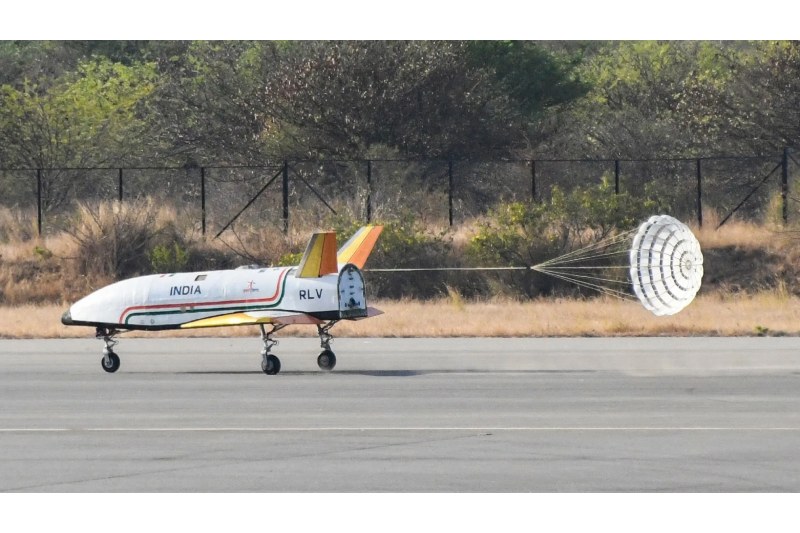ISRO Completes the “Pushpak” Reusable Landing Vehicle Landing Experiment Successfully

On Friday, March 22, 2024, at the Aeronautical Test Range in Chitradurga, the Indian Space Research Organization (ISRO) successfully carried out the Pushpak Reusable Landing Vehicle (RLV) LEX 02 landing experiment.
The space agency’s second experiment in the series is the landing experiment on RLV LEX 02.
On Friday, March 22, 2024, at 7:10 a.m., the test was run.
RLV-LEX-02 Experiment: ISRO achieves another triumph! The winged vehicle, Pushpak (RLV-TD), was released from an off-nominal position and made a precise autonomous landing on the runway.
According to ISRO, the RLV-LEX-02 mission proved the RLV’s capacity to land autonomously under non-nominal initial conditions upon release from a Chinook helicopter, building on the success of the RLV-LEX-01 mission completed last year. The RLV was designed to do increasingly challenging maneuvers with dispersions, make both downrange and crossrange corrections, and land on the runway in a fully autonomous manner.
“The winged vehicle, called Pushpak was lifted by an Indian Air Force Chinook Helicopter and was released from 4.5 km altitude. After release at a distance of 4 km from the runway, Pushpak autonomously approached the runway along with cross-range corrections. It landed precisely on the runway and came to a halt using its brake parachute landing gear brakes and nose wheel steering system,” ISRO said.
According to ISRO, the mission effectively replicated the approach and fast landing circumstances of a space-returning RLV.
“With this second mission, ISRO had re-validated the indigenously developed technologies in the areas of navigation, control systems. landing gear and deceleration systems essential for performing high speed autonomous landing of a space returning vehicle,” ISRO said.
It further said that, following the proper certification and permissions, the winged body and all flight systems utilized in RLV-LEX-01 were reused in the RLV-LEX-02 mission.
Therefore, this trip also demonstrates the flying hardware and flight systems’ capacity for reuse. The airframe structure and landing gear were upgraded to withstand higher landing loads based on observations from RLV-LEX-01, according to ISRO.
According to Dr. S Unnikrishnan Nair, Director of ISRO’s Vikram Sarabhai Space Centre (VSSC), the organization was able to gain proficiency in terminal phase maneuvering, landing, and energy management in a fully autonomous manner, an essential step towards upcoming Orbital Re-entry missions.